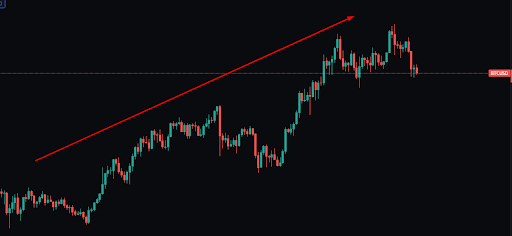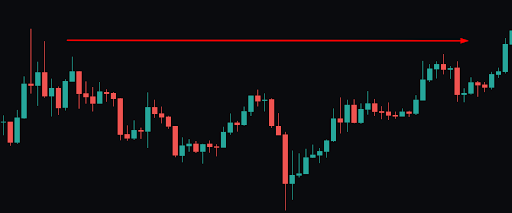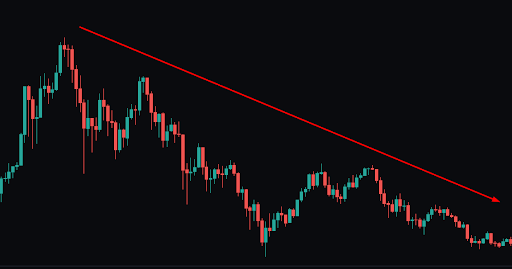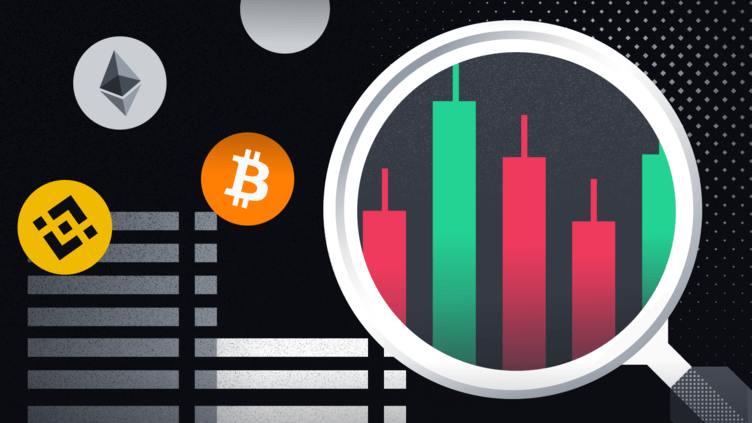The digital currency market continues to grow and break records when last year (2021) the market crossed the $ 2.5 trillion mark. Cryptocurrency trading and digital currency holdings have led to large financial institutions and fintech companies such as Microstrategy, Square, and many more entering the market, with various countries adopting digital currencies as part of their future vision, and this feels like just the beginning.
NON Financial Advice
The information contained on this Website and the resources available for download through this website is not intended as, and shall not be understood or construed as, financial advice. I am not an attorney, accountant, or financial advisor, nor am I holding myself out to be, and the information contained on this Website is not a substitute for financial advice from a professional who is aware of the facts and circumstances of your individual situation.
We have done our best to ensure that the information provided on this Website and the resources available for download are accurate and provide valuable information. Regardless of anything to the contrary, nothing available on or through this Website should be understood as a recommendation that you should not consult with a financial professional to address your particular information. The Company expressly recommends that you seek advice from a professional.
Neither the Company nor any of its employees or owners shall be held liable or responsible for any errors or omissions on this website or for any damage you may suffer as a result of failing to seek competent financial advice from a professional who is familiar with your situation.
In this guide, we will explain what trading is and what the meanings are behind it. We will illustrate why trading is not suitable for everyone, how to increase capital with the help of trading in a calculated way, and also some technical background and introduction to trading operations.

What is the difference between investing and trading in crypto?
Investment and trading usually come together when it comes to financial markets or the crypto market. But the differences between the two – are very large.
The investor is interested in earning a certain return usually over long periods of time and after in-depth research in the process of assembling the investment portfolio. The trader, on the other hand, is interested in being active and buying and selling in the short to medium term. The trader’s goal is to “win” the return the investor expects to earn passively, but less the cost of time invested, commissions, and taxation.
The said investor is interested in examining the fundamentals behind the project he is examining, and his long-term potential to realize his vision and mission. Among the things he examines are the project team, the currency economy, and more. The trader, on the other hand, is interested in price movement and the possibility of tracking it through technical analysis of graphs, where the shorter the trading time frames, the smaller the role of the fundamental.
In addition, while the investor can pre-define the conditions that will change his investment thesis more easily since the time perspective is longer, with the trader this is not the case. The trader must act with careful risk management, especially in the volatile crypto market, and keep a trading diary that allows him to do so.
Basic rules for trading digital currencies
There are a number of iron rules that the trader must internalize and follow in order to be successful in the long run. In fact, the reason the vast majority of traders lose over time is a breach of the basic laws and poor planning of transactions.
Here are the three basic rules:
Build a predefined plan
A trader who does not plan gambles out of emotion. The purpose of the trader’s plan is based on rational thinking and setting loss-stopping targets and making a profit accordingly. It is advisable to set long-term goals for the trading portfolio in order to identify that it is indeed on the desired upward trend.
The rationale behind this is simple: when you make a decision at ease while taking into account a large number of factors that may affect it, the plan inevitably comes out more successful over time. On the other hand, when you do not plan – you tend to act exciting, which is already a violation of the second basic law.
Emotion control
Trading is intense from investing. When successful in several transactions in a row, can often float a feeling that we are invincible and that we have cracked the method. This situation is extremely dangerous as trading is based on statistics and positive expectations over time.
On the other hand, there is a situation where you lose several times in a row and from there arises the desire to recoup the loss quickly by taking risks of “all or nothing”. This, of course, can cause the case to be deleted quickly.
Similarly, bad news can cause fear and involvement of emotion due to fear of loss. As a result, the trader may miss out on potential gains. On the other hand, feeling missed (FOMO) contributes to greed and taking uncalculated risks.
Careful risk management
Risk management is the key to long-term profitability and is the most important thing in trading.
Risk management relies on a risk/return ratio and is based on the trader’s ability to manage the risk/return ratio so that he succeeds in the long run. In fact, a risk/return ratio will be crossed against the success rate of trades over time, thus helping to determine whether the trader is profitable or not.
The ability to estimate success rates and risk/return ratio is done by carefully documenting the trades in the trading log, and after a sufficiently extensive sample of trades, it will be possible to estimate this.
For the purpose of the example: a trader estimates that in every transaction he enters into, the risk/return ratio is 1: 2, that is, for every shekel he risks, there is potential to earn two shekels. Therefore, if he succeeds in 50% of the cases in which he finds such deals, the trader will be profitable over time.
Two important things to consider in risk management are fees and time. Ask yourself, if you deducted all the commissions you paid for trading operations and the time you devoted to active trading, would it pay off for you if you were just as invested?
Japanese candles and reading graphs – why are they useful?
The Japanese candle represents a time frame and price range of a particular asset. Japanese candles are the most common tool when performing graph analysis of certain financial assets, or digital currencies. Japanese candles can give clear indications about expected movements of the same property.
- Green (bull) candle – a candle in whose time the price of the property has risen.
- Red candle (bear) – a candle in whose time the price of the property has decreased.
- Wicks – The price range at which the property spent the candle time.

Basic graph reading – trends
When looking at a graph of a particular asset in a particular time frame, one can distinguish 3 different scenarios. For the purpose of the example we will take the price of Bitcoin as an example:
Scenario 1 – Positive trend
In this scenario, it can be seen that the price of the property is on a significant upward trend within the time frame we are looking at.

Scenario 2 – Shuffle
In this scenario, it can be seen that the price of the property is not in a clear trend and it is difficult to deduce where it will aspire in the future.

Scenario 3 – Negative trend
In this scenario, it can be seen that the price of the property is on a significant downward trend within the time frame we are looking at.

Basic graph reading – support and resistance
Levels of support and resistance are areas of supply and demand, where there is a lot of activity of traders and investors.
A support level is so named because buyers at this level serve as price support and prevent it from going down. In contrast, a resistance level is so named because sellers at this level serve as resistance to the price and refuse to let it rise.
Such areas can be identified by drawing lines on the graph and using indicators.
When it comes to supporting there are two options that it will hold the price will recover, or it will break and the price will continue in a downward trend.
When it comes to resistance there are two options as well: that it will hold and the price will refuse to continue to rise, or that it will erupt and the price will continue to rise
According to the above graph, the support lines (green) and resistance lines (red) can be distinguished. The obvious conclusion is simple: with proper risk management, you can buy with supports and sell with resistances, or sell short with resistance (short) and buy back with supports.

Subtotal
So far, we have understood what crypto trading versus investment is. We learned about the basic rules for the novice trader, and the tool called technical analysis which the trader can use to make more informed decisions. The next step is to learn how to use crypto trading platforms.
A trading arena is a market where goods and/or financial instruments are bought and sold. In the case of the crypto market, these are digital coins and tokens, derivatives, and other financial instruments that mimic those coins and tokens and more.
The main function of the stock exchange (trading arena) is to ensure fair and orderly trading along with efficient distribution of information and price for all currency traded on this stock exchange. There are a large number of exchanges, some less recommended and some more recommended.
Introduction to basic trading operations
After understanding what a crypto exchange like FTX is and subscribing to one, let’s understand what’s going on in it. Well, in each exchange we have the option to give different orders that are executed in advance according to a plan that we will define.
There are many advanced trading activities, so we will go over the most common and useful ones:
Market Order
This command is immediate, that is, sell or buy at the most available market price. It should be noted that if there is price volatility the execution can be less attractive.
Example of market order: Bitcoin is on the rise and crosses the $ 60,000 mark. If a market order is executed just as the price continues to rise, it will most likely be executed at prices higher than $ 60,000. In exceptional cases such as stock exchanges with low trading volumes and many market orders in a short time, the order can be filled with a margin of several hundred dollars from the initial planning.
Limit Order
A limit order is a very common order that allows you to set buy or sell points in advance at certain prices and is filled in automatically if the price reaches it.
Example of limit order: We deposited money into our stock exchange account and decided that we were willing to purchase our first bitcoin for $ 50,000, when it is now trading at $ 60,000, in the belief that it would drop towards our purchase price.
So we sent a buy order to Limit at this price. The order will not be fulfilled until the price reaches (if it does) $ 50,000. The opposite is also true when we want to sell. If we have decided that we are not willing to sell our Bitcoin unless it reaches $ 99,000, we will enter a limit order (sale) at this price, which will only be implemented if the price reaches $ 99,000 or more.
Take Profit Ordinance
This command is basically a command that closes a position we were in. If we were in Long (bet the price would go up) this order would be a limited sale order. If we were short (bet the price went down) this order would be a limit buy order.
Stop-loss order
This order is basically an order that closes a position we were in at the price we set and is basically just like the ‘profit taking’ order but it is executed if the price goes against us in order to limit the loss.
The loss-making order is especially important for any trader as it plays a significant role in determining the risks to their position and management.
5 tips for beginners to trade in crypto
Keep a trading diary
In order to know where to improve and where to preserve our trading operations, one has to document the trading history in order to learn how to become better traders over time.
Spend time learning and gaining experience in small amounts
Learning is the key to success in any field, especially trading in a volatile market such as the crypto market, in order to learn in the most professional and comprehensive way and learn how to increase capital step by step, take the comprehensive crypto course of the site’s founder – Ben Smuha.
Find the right people to trade with and share ideas with
Good traders use the ideas and strategies of other successful traders to develop themselves in the most effective way, just as we do in the jungle community.
Keep track of the time you invest and cross it out against your profitability
Ultimately, trading takes time to take into account, and if a trader manages to generate a better return from the investor, his time cost should also be taken into account, since the investor does not devote the same amount of time.
If it is important for you to put money in the bank in the next year or two, avoid unsupervised exchanges
The field of digital currencies is still in its infancy, banks and authorities are still lagging behind in trying to catch up with the rapidly evolving industry and as part of this there are difficulties in dealing with banks especially with the funds visiting unsupervised stock exchanges.
In conclusion
Before you start buying and selling various currencies in order to make a profit, it should be taken into account that the vast majority of traders lose money over time. The traders who do profit, are the ones who have a defined plan, know how to manage risks and analyze graphs in a good way. Good traders focus on improving their performance rather than the money they make. The road to becoming a good trader can be short for some people and tedious for some.
Manage risks, build a plan and strategy and do not deviate from it. Needless to say, everything you read in the above guide is for education and enrichment only and should not be construed as any kind of advice or recommendation for action.





GIPHY App Key not set. Please check settings